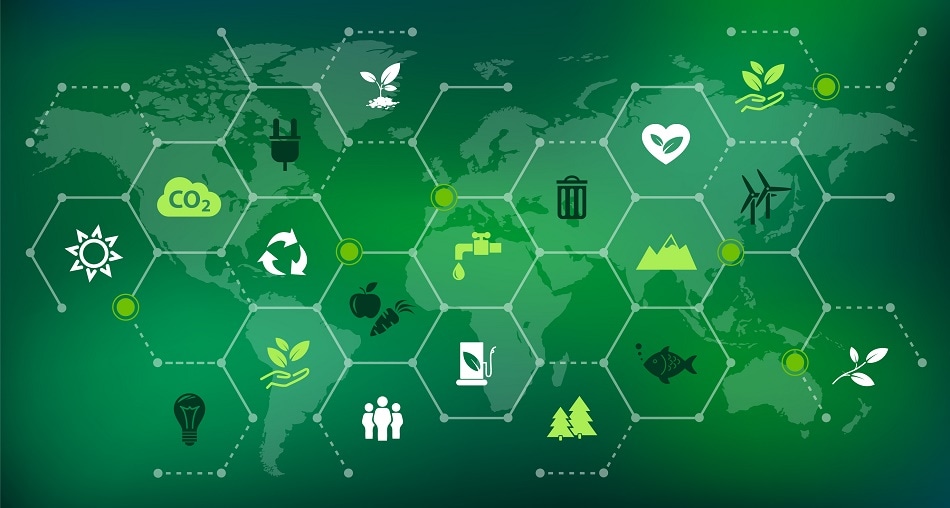
Image credit: julia.m / Shutterstock.com
Each day it seems we are being presented with the mammoth challenge humankind faces with regards to the environment, particularly concerning the climate crisis – rises in the Earth’s temperature, ice caps melting, and concerns around the ozone layer.
These issues have consistently been appearing in the headlines, improving public awareness but also leading to an increase research in projects and initiatives to think about alternative ways of living. This is because policy makers are coming to realize the impact that current standards concerning the use of finite resources and large-scale release of greenhouse gases is having on the plant.
While changes in policy have been introduced and new accords are continually being drafted to reduce the negative impact humanity has on the environment there is still more to be done by governments and private organizations worldwide.
Using the power of AI and IoT technologies for developing environmental sustainability could be the approach that ensures socio-economic development while fostering a harmonic balance with the natural world – such technologies can be utilized to implement cleaner, greener, and more sustainable solutions for an innovative transition into the future.
According to a report by Intel, 74% of 200 business decision makers were able to come to the agreement that AI would help find a solution to current environmental problems. Apple has been committed to become a Big Tech pioneer on this front with the company focusing on climate change, resources, and safer materials as stated in its 2018 Environmental Responsibility report. Their biggest leap forward being that all of Apple’s operations now run on 100% renewable energy.
“We proved that 100 percent renewable is 100 percent doable. All our facilities worldwide—including Apple offices, retail stores, and data centers—are now powered entirely by clean energy. But this is just the beginning of how we’re reducing greenhouse gas emissions that contribute to climate change. We ‘re continuing to go further than most companies in measuring our carbon footprint, including manufacturing and product use. And we’re making great progress in those areas too.” Apple stated in a press release on their website.
Furthermore, Apple has pledged to “explore new markets and invest in energy-storage” as part of its growing initiative which includes its disassembly bot Daisy that picks up from where its predecessor Liam left off. Utilizing smart robotics technology and AI system software Daisy is able to take apart up 200 iPhone devices per hour identifying and recovering high-quality materials that can be reused and recycled.
This is another way Apple is taking responsibility in conserving resources, driving energy efficiency to reduce its impact on climate change for sustainable development.
So how can we best understand the concept of ‘sustainable development’. The term was first coined in 1987 in the UN’s report, ‘Common Future’. The aim and purpose of sustainable development is to achieve economic profit balanced with social inclusion and ecological justice.
While true that governments maintain a vital role in reaching sustainable development goals, they are not to be held solely responsible for it. Both large and small private organizations and citizens have to do their part. However, sustainability concepts can be difficult to understand and awareness around how to achieve set markers unclear. Therefore, governments and their policy makers have to ensure there are sufficient programs available to all sectors.
The 2030 Agenda for Sustainable Development – published by the UN members in the year 2015 – is one way to achieve sustainability using a global partnership. However, as previously mentioned, countries (both developed and developing ones) should embrace AI & IoT to move towards achieving better results.
AI and IoT has many applications and ways of bringing enhanced connectivity to physical devices in the environment such as the previous example of Apple using these technologies to reduce e-waste and therefore decrease its carbon footprint. Further examples include, applying AI and IoT for agricultural sustainability, leveraging AI and IoT for species protection and using AI and IoT for cleaner air, water preservation, and renewable energy technologies.
Smart grid technologies are an influential tool being implemented into the systems of energy providers by recording the energy usage of homes, offices, and the wider public network, the information relayed can make real-time adjustments to improve energy distribution and efficiency.
Another area in which AI and IoT can assist is the reduction of air pollution concerning the transport and automotive sector. Integrating these technologies with autonomous cars and public transport systems enable greater fuel efficiency where and when needed.
Local governments and commercial agencies can also use AI and IoT to monitor air purity levels which could distribute alerts and even be used in traffic light systems to control the flow of inner city traffic and help reduce travel times, thus, lowering fuel emissions – Pittsburgh is already one city using such systems and has reduced travel times of its denizens by 25 percent.
So, while we continue to approach the future with caution concerning the environment and current climate crisis the use of AI and IoT tools prove to be significant advances in our quest for reducing the impact humanity has on the planet whilst promoting socio-economic progress in line with environmental sustainability.
Disclaimer: The views expressed here are those of the author expressed in their private capacity and do not necessarily represent the views of AZoM.com Limited T/A AZoNetwork the owner and operator of this website. This disclaimer forms part of the Terms and conditions of use of this website.